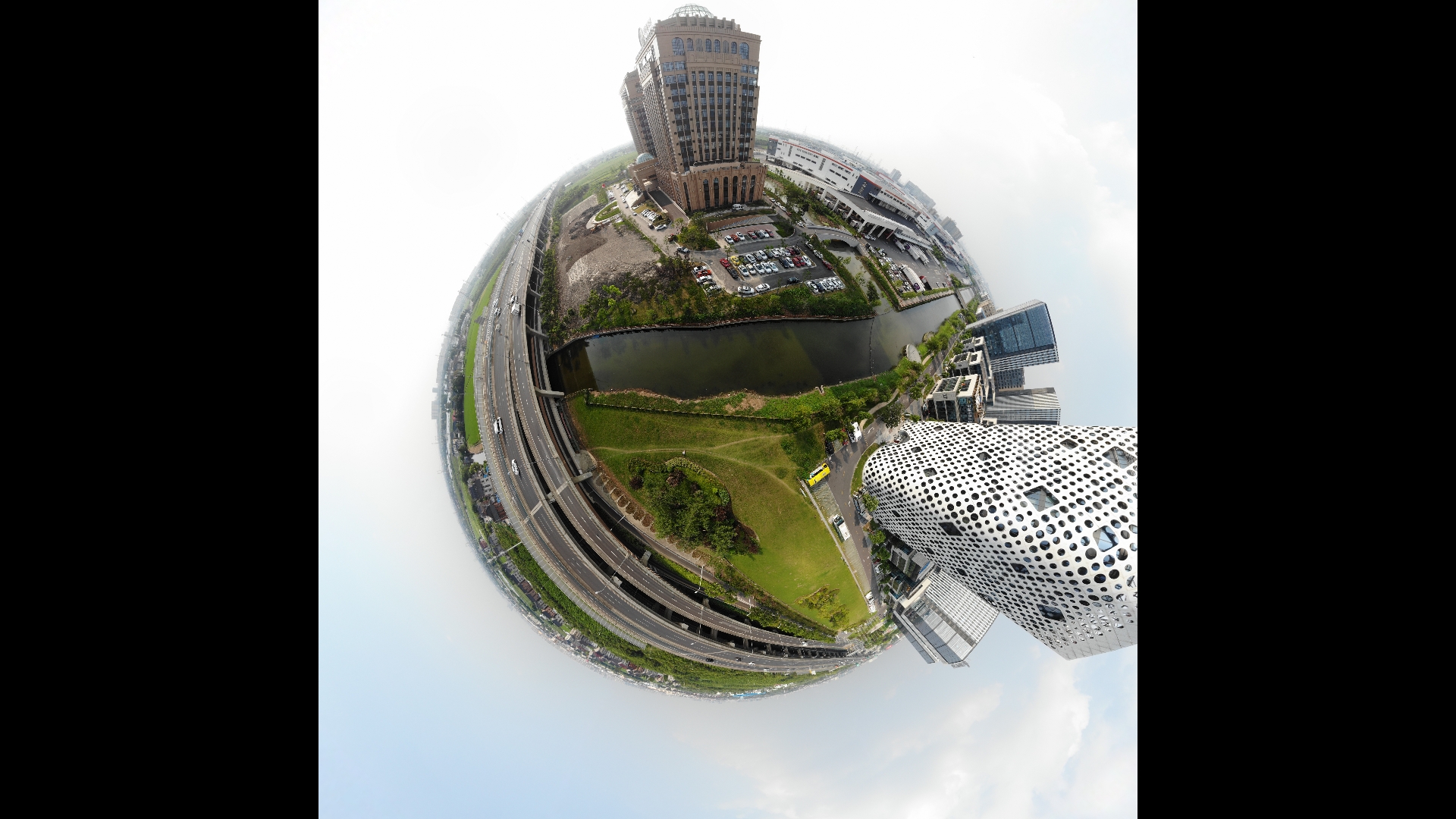planet_ani 基于大疆Mavic拍摄的全景图,生成球体平面投影(小行星)短视频图片序列
- part1 微小旋转,画面展开
- part2 螺旋旋转至拍摄者斜上方
- part3 拉近镜头
OpenPano is a panorama stitching program written in C++ from scratch (without any vision libraries). It mainly follows the routine described in the paper Automatic Panoramic Image Stitching using Invariant Features, which is also the one used by AutoStitch.
- gcc >= 4.7 (Or VS2015)
- Eigen
- FLANN (already included in the repository, slightly modified)
- CImg (optional. already included in the repository)
- libjpeg (optional if you only work with png files)
- cmake or make
Eigen, CImg and FLANN are header-only, to simplify the compilation on different platforms. CImg and libjpeg are only used to read and write images, so you can easily get rid of them.
On ArchLinux, install dependencies by: sudo pacman -S gcc sed cmake make libjpeg eigen
On Ubuntu, install dependencies by: sudo apt install build-essential sed cmake libjpeg-dev libeigen3-dev
$ make -C src
or
$ mkdir build && cd build && cmake .. && make
The default clang on OSX doesn't contain openmp support. You may need gcc or different clang. See #16.
- Install cmake, VS2015
- Set environment variable
Eigen3_DIRto{YOUR_EIGEN3_DIRECTORY}/eigen3/cmake. - Open Visual Studio Developer Command Prompt.
cd path/to/OpenPanocmake .- Open the VS2015 project and compile the project
- copy
config.cfgto the directory containingimage-stitching.exe - The author have never used Visual Studio and this windows build process may not work for you. Feel free to submit PR to improve the build process.
Three modes are available (set/unset the options in config.cfg):
-
cylinder mode. Give better results if:
- You are only turning left (or right) when taking the images (as is usually done), no translations or other type of rotations allowed.
- Images are taken with the same camera, with a known
FOCAL_LENGTHset in config. - Images are given in the left-to-right order. (I might fix this in the future)
-
camera estimation mode. No translation is the only requirement on cameras. It can usually work well as long as you don't have too few images. But it's slower because it needs to perform pairwise matches.
-
translation mode. Simply stitch images together by affine transformation. It works when camera performs pure translation and scene points are roughly at the same depth. It also requires ordered input.
Some options you may care:
- FOCAL_LENGTH: focal length of your camera in 35mm equivalent. Only useful in cylinder mode.
- ORDERED_INPUT: whether input images are ordered sequentially. has to be
1in CYLINDER and TRANS mode. - CROP: whether to crop the final image to avoid irregular white border.
Other parameters are quality-related. The default values are generally good for images with more than 0.7 megapixels. If your images are too small and cannot produce satisfactory results, it might be better to resize your images rather than tune the parameters.
$ ./image-stitching <file1> <file2> ...
The output file is out.jpg. You can play with the example data to start with.
Before dealing with very large images (4 megapixels or more), it's better to resize them. (I might add this feature in the future)
In cylinder/translation mode, the input file names need to have the correct order.
Tested on Intel Core i7-6700HQ, with ESTIMATE_CAMERA mode:
- 11 ordered images of size 600x400: 3.2s.
- 13 ordered images of size 1500x1112: 6s.
- 38 unordered images of size 1300x867 (high vertical FOV): 51s.
Memory consumption is known to be huge with default libc allocator.
Simply using a modern allocator (e.g. tcmalloc, jemalloc) can help a lot.
Also, setting LAZY_READ to 1 can save memory at the cost of a minor slow down.
Peak memory in bytes (assume each input has the same w & h):
- Without
LAZY_READoption: max(finalw * finalh * 12, #photos * w * h * 12 + #photos * #matched_pairs * 96 + #keypoints * 520) - With
LAZY_READoption: max(finalw * finalh * 16, #threads * w * h * 12, #photos * #matched_pairs * 96 + #keypoints * 520)
- Features: SIFT
- Transformation: use RANSAC to estimate a homography or affine transformation.
- Optimization: focal estimation, bundle adjustment, and some straightening tricks.
For details, see my blog post.
To get the best stitching quality:
- While rotating the camera for different shots, try to keep the position of camera lens static.
- Keep the exposure parameters unchanged.
- Do not shoot on moving objects.
- Objects far away will stitch better.
- The algorithm doesn't work well with wide-angle cameras where images are distorted heavily. Camera parameters are needed to undistort the images.
